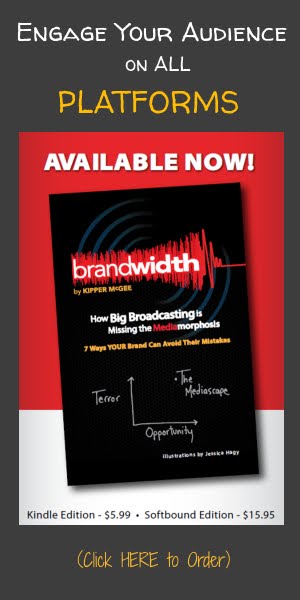As brilliant innovators like Rosser Reeves, David Ogilvy and Victor Schwab put it years ago, "Say something, say it well, say it often." In the digital age, this remains as true as ever. Some consumers will click on a display ad the first time. Others need 5 or more impressions. Others will never click -- then they were probably not really prospects at this time.
As for your Branding efforts online, why should media consumers come to you via any platform? What is worth their taking a second glance? You need to build a strong message that gets your key benefits across without adding to the bane of broadcasting: clutter! Simple, but not easy.
2. Make sure you deliver a USP
In the early 60's Rosser Reeves introduced the concept of the Unique Selling Proposition in his groundbreaking work Reality in Advertising. Nutshell: this is your competitive advantages or "W.I.I.F.M." ("What's in it for Me?") from the consumer's standpoint.
With a sea of choice, make sure you NEVER waste your prospect's time with mundane or boring offers. General rule of thumb: if your co-workers aren't begging you for a deal that's being offered, your consumers probably won't, either.
3. Be sure your initial message guides consumers toward a specific action.
Anyone who knows me understands that my bias is towards gathering a relational database for your content brand(s). This is the power behind such mega-brands as Google, Amazon and a number of successful broadcasters. Ironically, three entities who start with 100% database participation (cable, satellite and the telcos) range from zero value to modest efforts at best.
Noted speaker, author and venture capitalist Guy Kawasaki told a group of broadcasters "you're mining for coal, but leaving the gold behind", referring to the dramatic waste of digial resources. This is also true for advertising partners utilizing your digital assets. As Steve Krug puts it, "Don't Make Me Think".
4. Think Visually
TV and print people have 'gotten' this for decades, but radio people need to realize they are now playing in three (3) arenas: Audio, Visual and Text. The visual arena includes static images, rich media and video. The images on your site should enhance your message by adding visual stimulation. Almost every media brand has a logo. Is the same true of each program and promotion? In TV, yes. In radio, sometimes.
5. S.C.A.N.-proof your Digital Platforms
There's a good reason the world of Twitter happens 140 characters at a time -- People are more time-crunched an info-overloaded than ever. Never forget that consumers will scan before becoming fully engaged. You probably did so on this post. We know on-air listening decisions (to punch or not to punch!) are typically made in the first 6 seconds. Give your digital products a frequent "S.C.A.N.":
Situation: Consumers are slammed. Make your digital products easily scannable and understandable.
Confusion leads to
Apathy...which ends up leading to
Non-Participation and click-aways.
According to the latest Jacobs Media Tech Survey 10
- Consumption of all media is higher that ever
- Core radio listeners are moving fast to digital media & gadgetry
- Radio is on both sides of the digital tipping point
- The "connected car" movement continues.
The gold is there. We just need to be smart enough not to stop once we've harvested the coal. To discuss ways in which these concepts might be put to work for you, let's talk!
***The Steamed Streamer***
Confused much? Streaming a fairly well-respected Large Market News-Talk Station recently, I witnessed a mismatch of cross-platform dis-pollination like I have not heard recently.
The on-air presentation sound stodgy and ancient, and the station was still using radio newscasts for 'recent history' reports, and through formattics, inviting consumers to 'visit the website' for the latest breaking news. DUH!
Not how I'd opt to BRAND my station.
Spoiler alert: this 'interweb' thing may be around for a while. Are you really incorporating ALL platforms into your 'branded media content'? Many are not, which means OPPORTUNITY for those who are. Why not offer old and new media platforms to allow consumers to consume 'station branded content' in the synergistic manner to which they are accustomed?
- LIVE news content should be for breaking and developing stories, while talk segments can perform analysis and digestive discourse.
- Podcasts, print and visuals (including video and photos) can reside on the web, and be and SHOULD BE promoted via social channels.
- USE SMS TEXTING for breaking news alerts.





